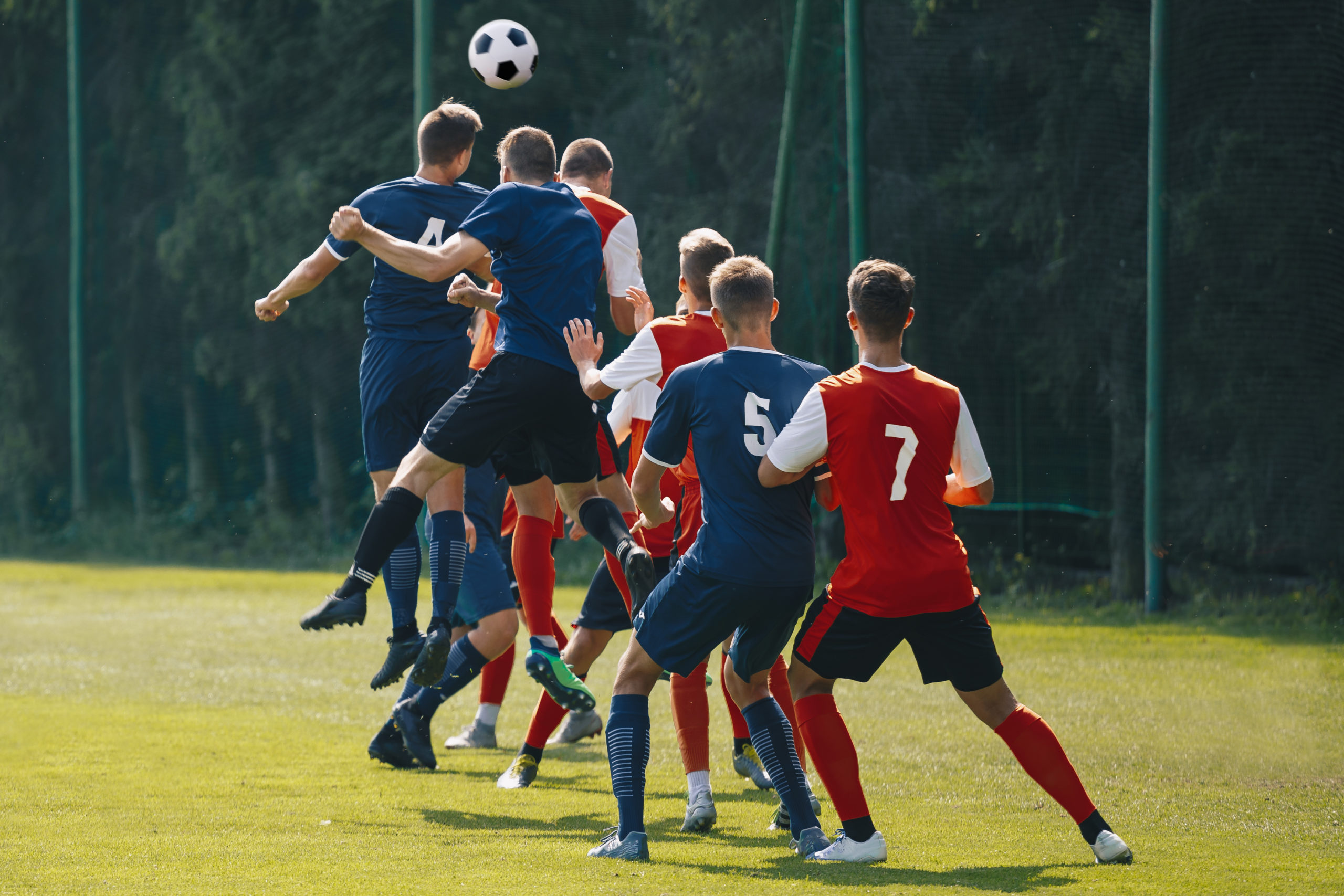
There is growing recognition of the risks from concussion in football, both in terms of single head injury events and the cumulative effects of head impacts during playing career.
A particularly sharp focus on this concern has come after the results from the FIELD study (Football’s Influence on Lifelong health and Dementia risk), were released last month.
The study compared former footballers to people of similar age and background and found there was an increased incidence in footballers of chronic traumatic encephalopathy (CTE), a degenerative brain disease linked to head trauma and dementia.
The risk was dependent upon player position: defenders were found to be five times more likely to develop dementia than the average person. The risk for goal keepers was found to be lower; this was no different to the average person. A striker/forward player had 2.8 times the risk of the average person.
The strong hypothesis was that defenders are at the greatest risk because they need to head the ball more frequently than players in other positions.
The FIELD study involved 7,676 former professional footballers, who were playing between around 1930 and 1998. It was the first peer-reviewed study of its kind which has firmly placed concerns about football, head injuries and long-term damage at the centre of the policy agenda.
A challenge, inevitably, is that footballers within the FIELD study were playing across a very wide time span, when the weight and density of football was very different and head injury awareness far less developed.
What does the evidence from the present-day game tell us about risks and what steps might be protective for players?
Although heading the ball is strongly linked to concussion, several studies suggest in today’s game, it is not the header itself which confers the greatest risk; the main risk is of players’ heads clashing as jump to contest the ball (O’Kane, 2016).
Studies assess other individual factors amplify this risk: for example, lower head to neck circumference and overall neck strength is linked to greater injury risk.
This is believed to be one reason why there is an overall increase in risk from heading the ball for female footballers compared to males, where neck strength and circumference will be lower. This would also confer a greater risk for younger players contesting headers.
Another risk factor was found to be a higher proportion of time spent playing competitive matches, compared with training time. The theory is not only that more competitive play is, unsurprisingly, more likely to confer risk but also that controlled training can be protective in terms of building strength and technique.
It is too early to be able to fully assess the impact of the Football Association’s ban on heading the ball in training for 12-year-olds and younger, but this policy, introduced in February 2020, seems well aligned to the evidence.
An under-explored but emerging area is the link between aggressive play and injury risk and from this, the role match officials may be able to play in managing the way football is played in terms of applying rules, particularly around aggressive and dangerous play and in managing the way a match is played.
In their review of 18 studies of concussion injuries in sport, Waltzman and Sarmiento (2018), suggest ‘referees play a critical role in calling fouls and limiting dangerous play’ and could be more assertive and consistent in the way they do this (2018).
References
The FIELD study was led by Professor Willie Stewart, consultant neuropathologist and Honorary Clinical Associate Professor at the University of Glasgow. Results published in August 2021.
Waltzman D, Sarmiento K, What the research says about concussion risk factors and prevention strategies for youth sports: A scoping review of six commonly played sports. Journal of Safety Research.
O’Kane, J. W. (2016). Is heading in youth soccer dangerous play? The Physician and
Sports medicine, 44(2), 190–194. https://doi.org/10.1080/00913847.2016.1149423.
Kerr, Z. Y., Collins, C. L.,Mihalik, J. P., Marshall, S.W., Guskiewicz, K.M., & Comstock, R. D.
(2014). Impact locations and concussion outcomes in high school soccer player-to-player
collisions. Pediatrics, 134(3), 489–496. https://doi.org/10.1542/peds.2014-0770.
For our terms of use and disclaimer follow this link: https://coulthursts.co.uk/
